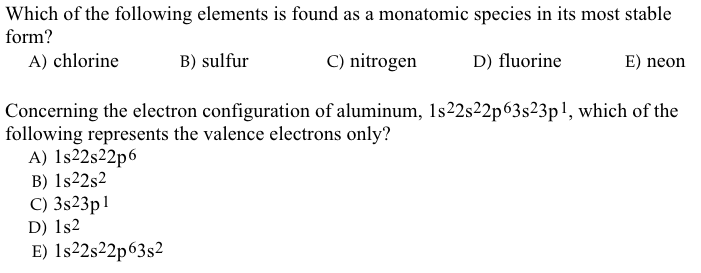

For example, the formula for aluminum oxide, Al 2O 3, indicates that this ionic compound contains two aluminum cations, Al 3+, for every three oxide anions, O 2−. The formula of an ionic compound represents the simplest ratio of the numbers of ions necessary to give identical numbers of positive and negative charges. Nonmetallic elements are found in the upper-right corner of the periodic table.Īs all substances must be electrically neutral, the total number of positive charges on the cations of an ionic compound must equal the total number of negative charges on its anions. Nonmetal atoms have relatively high electron affinities and thus readily gain electrons lost by metal atoms, thereby filling their valence shells. These elements lie to the left in a period or near the bottom of a group on the periodic table. Many metallic elements have relatively low ionization potentials and lose electrons easily. We can think about the formation of such compounds in terms of the periodic properties of the elements. For example, NaCl is a binary ionic compound. (credit a: modification of work by “Jurii”/Wikimedia Commons) The Formation of Ionic Compoundsīinary ionic compounds are composed of just two elements: a metal (which forms the cations) and a nonmetal (which forms the anions).

(c) When combined, they form white crystals of sodium chloride (table salt).

Chlorine is poisonous, but sodium chloride is essential to life sodium atoms react vigorously with water, but sodium chloride simply dissolves in water.įigure 7.2 (a) Sodium is a soft metal that must be stored in mineral oil to prevent reaction with air or water. The compound composed of these ions exhibits properties entirely different from the properties of the elements sodium and chlorine. The vigorous reaction between the elements sodium and chlorine forms the white, crystalline compound sodium chloride, common table salt, which contains sodium cations and chloride anions ( Figure 7.2). Chlorine atoms form chlorine gas, Cl 2, a yellow-green gas that is extremely corrosive to most metals and very poisonous to animals and plants. Sodium atoms form sodium metal, a soft, silvery-white metal that burns vigorously in air and reacts explosively with water. Neutral atoms and their associated ions have very different physical and chemical properties. Once dissolved or melted, ionic compounds are excellent conductors of electricity and heat because the ions can move about freely. Most ionic solids, however, dissolve readily in water. Ionic solids are also poor conductors of electricity for the same reason-the strength of ionic bonds prevents ions from moving freely in the solid state. Ionic solids exhibit a crystalline structure and tend to be rigid and brittle they also tend to have high melting and boiling points, which suggests that ionic bonds are very strong. The properties of ionic compounds shed some light on the nature of ionic bonds. A cation (a positive ion) forms when a neutral atom loses one or more electrons from its valence shell, and an anion (a negative ion) forms when a neutral atom gains one or more electrons in its valence shell.Ĭompounds composed of ions are called ionic compounds (or salts), and their constituent ions are held together by ionic bonds: electrostatic forces of attraction between oppositely charged cations and anions. Predict the charge of common metallic and nonmetallic elements, and write their electron configurationsĪs you have learned, ions are atoms or molecules bearing an electrical charge.Explain the formation of cations, anions, and ionic compounds.By the end of this section, you will be able to:


 0 kommentar(er)
0 kommentar(er)
